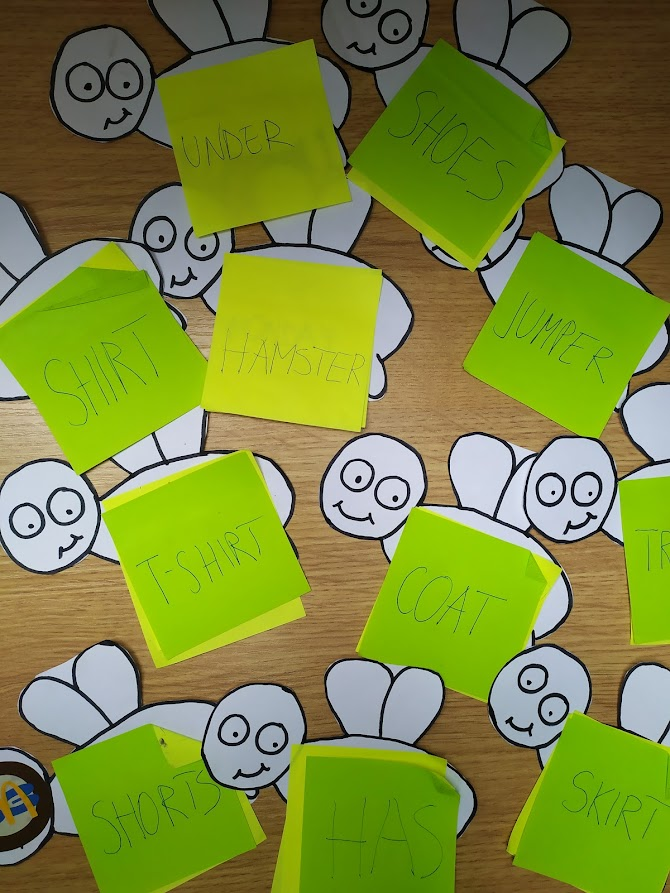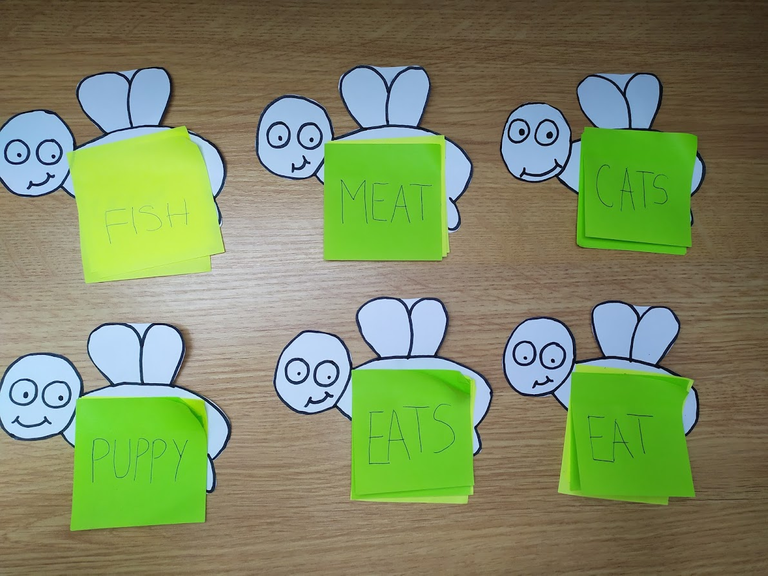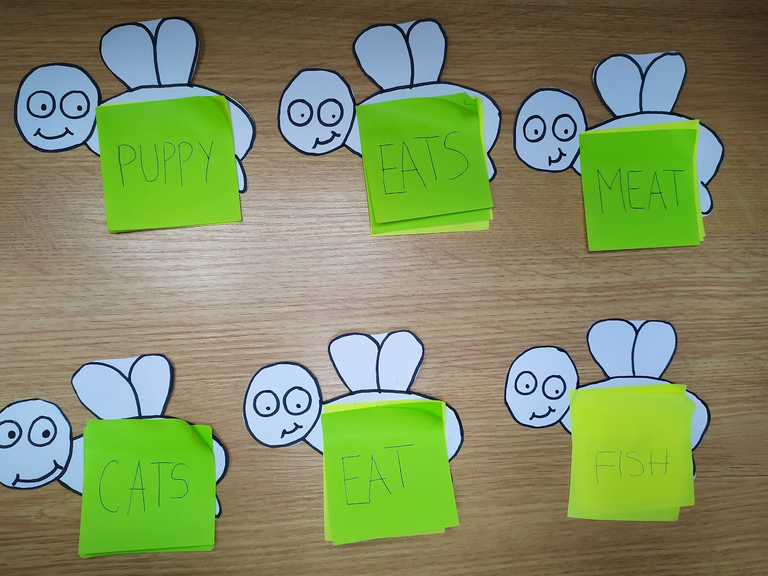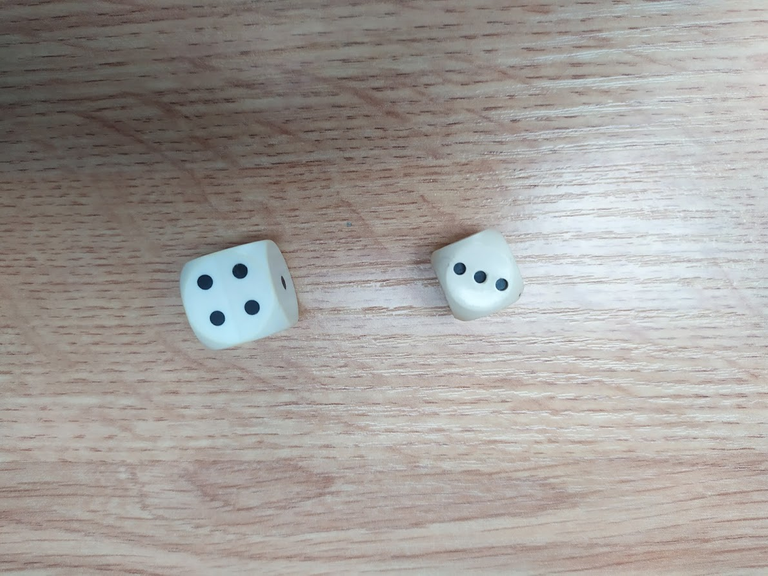
Dzisiaj Wam pokażę dwa pomysły na to jak pomóc swojemu dziecku uczyć się słówek w obcym języku.
Hi!
Today I will show you two ideas on how to help your child learn words in a foreign language.
Ja dotąd mam problemy w zapamiętaniu wyrazów, więc zależy mi, żeby np. mojemu rodzeństwu czy dzieciom, którym pomagam w nauce, pokazać już od najmłodszych lat jak efektywnie to robić.
So far I have problems remembering words, so I want to show, for example, my siblings or children whom I help in learning, from an early age, how to do it effectively.
1. Skojarzenia / Association
Jeden z moich uczniów kiedyś miał problem z zapamiętaniem słówka "listen". Chciałam mu jakoś pomóc więc stworzyłam mema. Tak mema. Z lisem trzymającym dziesiątkę 😅 "Lis" = 🦊 "Ten" = 10.
Możecie robić tak z każdym słówkiem, ale radzę, aby nie było to za często, bo wszystko się może pomieszać 😜
One of my students once had troubles with remembering the word "listen". I wanted to help him somehow so I made a meme. Yes meme. With a fox holding a number ten 😅 "Fox" (in Polish that means "lis" = 🦊 "Ten" = 10.
You can do this with any word, but I advise you not to do it too often, because everything can get mixed up 😜

2. Muchy / Flies
Większość dzieci nie lubi siedzieć na miejscu. Podczas nauki warto wprowadzić troszeczkę rywalizacji, ruchu. Dlatego stworzyłam muchy. Potrzebny Ci jest papier, karteczki samoprzylepne i klapka.
- Odrysuj muchy i je wytnij.
- Napisz na kartkach samoprzylepnych słówka, których się uczycie.
- Zabawa polega na tym: na karteczce napisane jest słówko po angielsku, natomiast dziecku mówisz po polsku. Jego zadaniem jest znalezienie tłumaczenia i trzaśnięcie muchy klapką.
Most children don't like sitting and not doing anything else. While learning, it is worth to bring a little competition and movement. That's why I made flies. You need paper, sticky notes and a flap.
- Draw the flies and cut them out.
- Write down the words you are learning on the post-it notes.
- The fun is about this: on a post-it notes which are stuck on the flies there is a word for example in English, while to your child you tell the word in nativeness language. His task is to find the translation and thwack the fly.
3. Układanie poprawnych zdań. / Ordering correct sentences.
Uczyłam się z uczniem ostatnio kiedy dodajemy do czasownika końcówkę "-s", a kiedy nie. Uczyliśmy się głównie na zwierzątkach, czyli "Puppy eats meat" i "Cats eat fish". Tutaj również pomogą muchy! Napisz na poszczególnych muchach słówka: puppy, cats, eat, eats, fish, meat i wystarczy mówić o jakie zdanie Ci chodzi. Na przykład "Szczeniaczek je mięso".


I was learning with a student the last time when we add "-s" to the verb, and when not. We learned mainly this with animals, for example "Puppy eats meat" and "Cats eat fish". Flies will help here too! Write the following words on sticky notes and stick them on the flies: puppy, cats, eat, eats, fish, meat and just say what sentence you mean. For example "Puppy eats meat" but in you nativeness language.

4. Jak to napisać? 😣 / How to write this? 😣
Częstym problemem jest niewiedza jak coś napisać. No bo jak to może być tak, że mówi się inaczej, a pisze się inaczej. Aby w fajny sposób to poćwiczyć, wystarczy Wam kartka, 2 kostki do gry i długopisy. Gra polega na tym:
- Zaczyna pierwsza osoba, która rzuca obiema kostkami. Tym razem wyszło 3 i 4

więc rysujemy rysunek taki jak po lewej lub taki jak po prawej:

To wszystko zależy od tego jak szybko chcesz przedostać się na drugą stronę, bo wygrywa ten, kto pierwszy dotknie domków (czyli tych rysowanych prostokącików) przeciwnika (przeciwnik rysuje swoje domki po drugiej stronie)
2.. Ale żeby uczestnik uzyskał ten domek, który narysował musi napisać poprawnie słówko! Na przykład "kwiatek". Uczeń musi najpierw pomyśleć jak jest kwiatek np. po angielsku, a później go porządnie napisać. Gdy poprawnie napisze wyraz ten domek jest jego, natomiast gdy się pomyli, w następnej rundzie o niego walczy pisząc następne słówko.
3.. To samo robi druga osoba i tak dalej :)
A common problem is not knowing how to write something. Because how can it be that people say differently and write differently? To practice it in a fun way, all you need is a piece of paper, 2 dice and pens. The game is about:
- The first person which starts first need to roll both dice. This time figure came out: 3 and 4
So you can draw it like on the right or like on the left:
It all depends on how quickly you want to get to the other side, because the first one to touch the opponent's houses (i.e. those drawn rectangles) wins (opponent is drawing his houses on the opposite side)
2..But in order for the participant to get the house he drew, he must write the correct word! For example "flower" in your nativeness language. The student must first think about the flower, e.g. in English, and then write it properly. When he writes the word correctly, this house is his, and when he makes a mistake, he fights for it in the next round by writing the next word.
3..The other person does the same, and so on :)
Mam nadzieję, że wyjaśniłam Wam, o co w tych grach chodzi :) Życzę więc miłej zabawy i nauki! :D Bo nauka może być ciekawa - trzeba tylko znaleźć na nią sposób 😜
I hope I have explained to you what these games are about :) So have fun and learn! :D Because studying can be interesting - you just have to find a way 😜
You received 1 LADY(LOH) token for posting in Ladies of Hive!
We believe that you should be rewarded for the time and effort spent in creating articles. The goal is to encourage token holders to accumulate and hold LOH tokens over a long period of time.